Dog walking is a popular activity among pet owners. It provides exercise for both the dog and the owner and also helps to create a bond between them. However, walking a dog can sometimes be challenging, especially if the dog is aggressive towards other dogs or people. Dealing with an aggressive dog while walking requires distinctive skills and knowledge to ensure the safety of everyone involved.
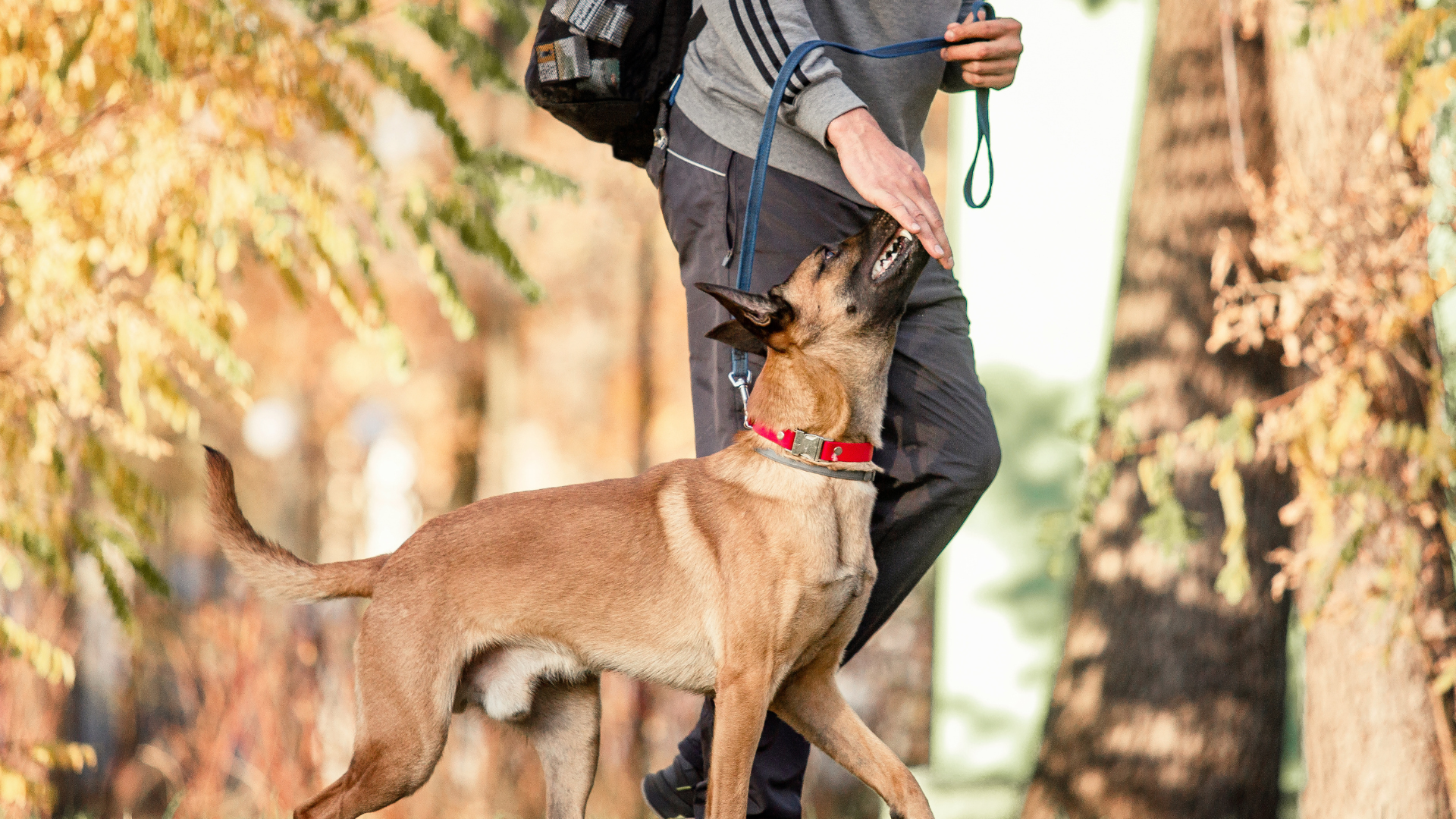
Aggressive behavior in dogs can range from growling and barking to biting and attacking. It can be triggered by various factors, such as fear, territoriality, or lack of socialization. Owners of aggressive dogs must take extra precautions when walking their pets to prevent incidents and avoid legal consequences. It includes using a leash and muzzle, avoiding crowded areas, and being aware of the dog's body language.
Understanding Canine Aggression
Recognizing Aggressive Behavior
The first step in dealing with aggressive dogs while walking is to understand the signs of aggressive behavior. Dogs display aggression in various ways, including growling, barking, lunging, and biting. These behaviors can be triggered by multiple factors, including fear, territoriality, and frustration.

It's essential to recognize the subtle signs of aggression as well, such as a stiff body posture, raised hackles, and a fixed stare. These signs can indicate that a dog is feeling threatened or uncomfortable.
Common Triggers of Aggression
There are several common triggers of canine aggression that owners should be aware of. One of the most common triggers is fear. Dogs may become aggressive when they feel threatened or frightened, such as when encountering unfamiliar people or animals.
Territoriality is another common trigger of aggression. Dogs may become aggressive when they feel that their territory is being threatened, such as when encountering other dogs on their walks.
Frustration can also lead to aggressive behavior in dogs. Dogs that are unable to release their energy through exercise or play may become frustrated and lash out.
By understanding the signs of aggressive behavior and common triggers, dog owners can take steps to prevent aggressive incidents while walking their pets. It's necessary to always be aware of your surroundings and to avoid situations that may trigger your dog's aggression.
Preparation Before the Walk
Before going on a walk with an aggressive dog, it is crucial to take certain precautions to ensure the safety of both the dog and the handler. Here, we will cover the three main aspects of preparation: proper equipment and attire, training and obedience commands, and planning the route.
Proper Equipment and Attire
When walking an aggressive dog, it is critical to use sturdy equipment that can handle the dog's strength and prevent them from escaping. A properly fitted collar or harness is essential, along with a sturdy leash that is at least six feet long. It is also recommended to bring a muzzle in case the dog becomes overly aggressive or needs to be restrained.
In terms of attire, the handler should wear comfortable, non-restrictive clothing and sturdy, closed-toe shoes. It is also significant to bring water and treats for the dog, as well as waste bags to clean up after them.
Fi GPS Tracking Dog Collar
Fi GPS tracking Dog Collar is ideal for helping keep your dog in the best shape. It enables you to track the dog's exertion levels and steps, which you can compare to other dogs of similar breeds within your neighborhood.
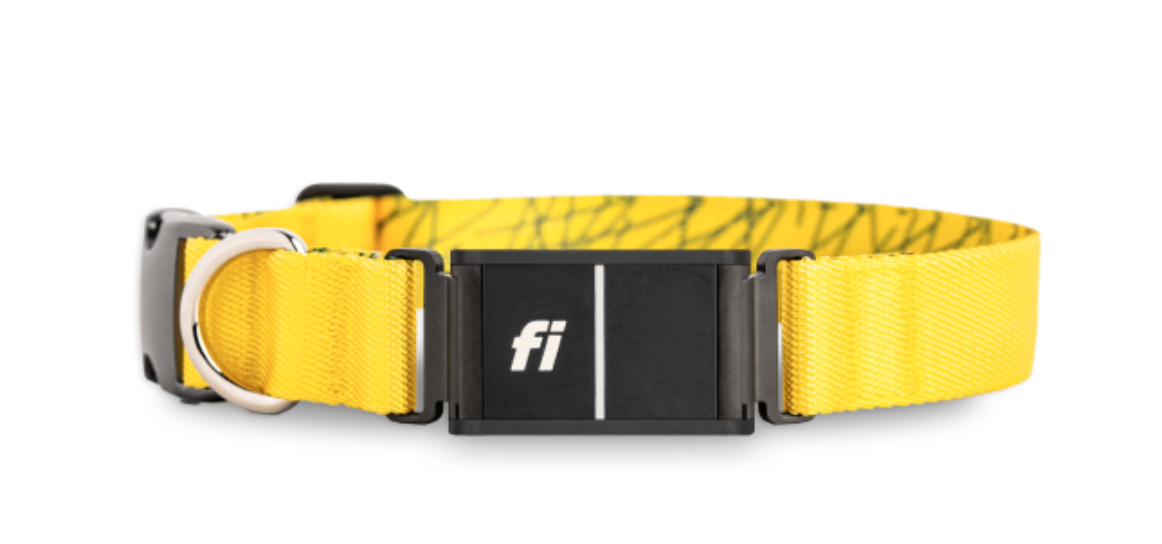
These tracking collars come in four core colors: pink, blue, gray, and yellow. They're a perfect fit for dogs whose neck sizes range between 11.5 and 34.5 inches. With its GPRS tracking feature, you'll instantly get a phone alert if your pup friend ever gets out unexpectedly.
Training and Obedience Commands
Before going on a walk with an aggressive dog, the handler should ensure that the dog is properly trained and responds to basic obedience commands such as "sit," "stay," and "come." It is also required to establish a clear hierarchy between the dog and the handler, with the handler being the pack leader.
In addition to basic obedience commands, the handler should also teach the dog specific commands for dealing with aggression, such as "leave it" or "drop it." These commands can be used to redirect the dog's attention and prevent them from becoming too aggressive.
Planning Your Route
When walking an aggressive dog, it is needed to plan the route carefully to avoid potential triggers or situations that could cause the dog to become aggressive. For example, the handler should avoid areas with a lot of foot traffic or other dogs, as well as areas with loud noises or unfamiliar smells.
It is also vital to be aware of the dog's body language and behavior throughout the walk and to be prepared to adjust the route or take a break if the dog becomes overly agitated or aggressive.
By taking these precautions and properly preparing before the walk, handlers can help confirm a safe and enjoyable experience for themselves and their aggressive dog.
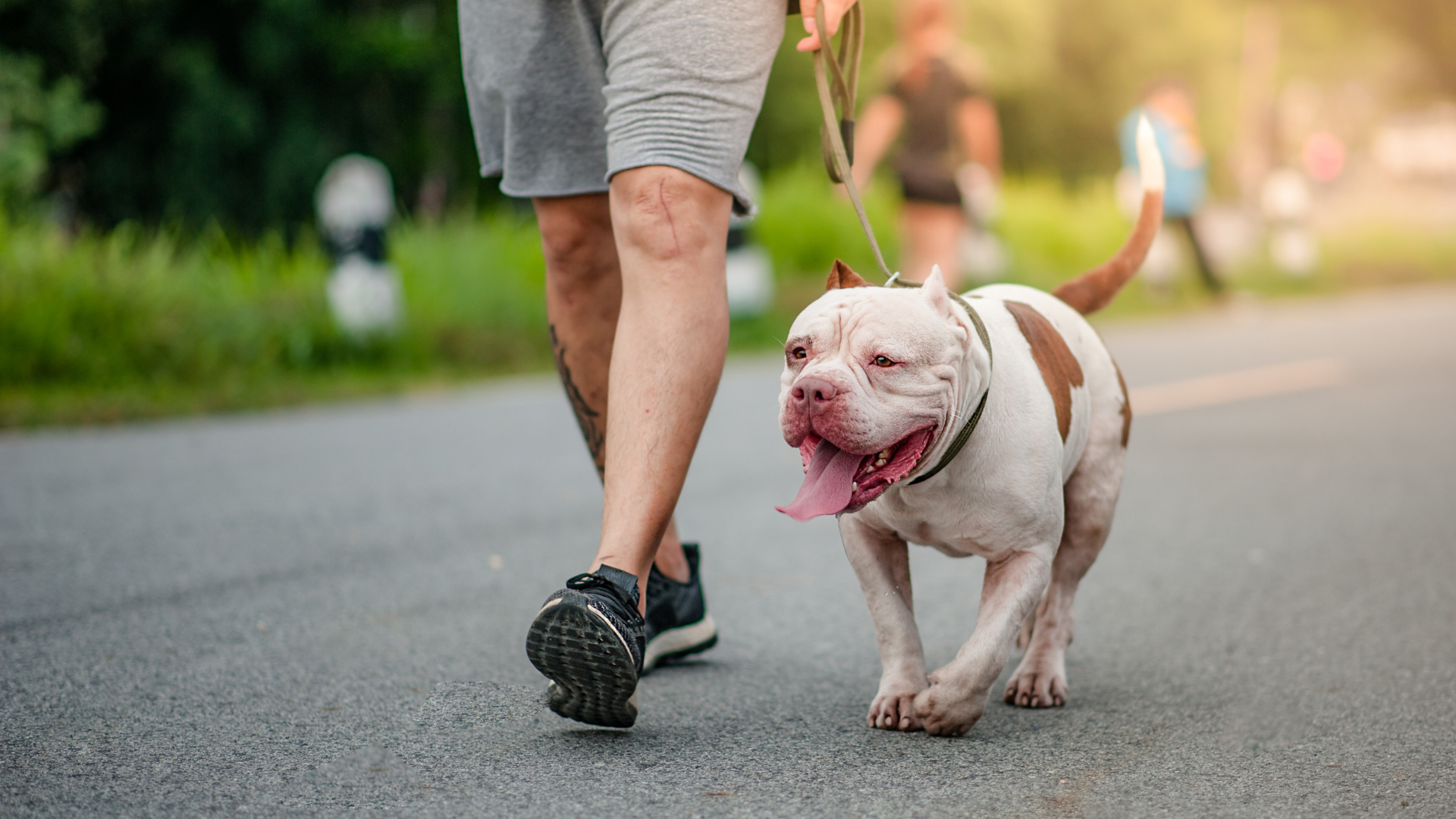
Encountering an Aggressive Dog
Encountering an aggressive dog while walking can be a frightening experience, but there are ways to manage the situation safely and effectively. The key is to remain calm and avoid escalating the dog's aggression.
Maintaining Your Calm
The first step when encountering an aggressive dog is to remain calm. Dogs can sense fear and anxiety, and this can make them more aggressive. It is necessary to stay calm and avoid making sudden movements or loud noises. Speak in a calm and reassuring voice, and try to maintain eye contact with the dog without staring directly at it.
Defensive Postures and Movements
If the dog continues to be aggressive, it may be necessary to take defensive postures and movements. It can include standing sideways to the dog, with your arms crossed in front of your body. This posture can make you appear less threatening to the dog. If the dog lunges at you, use your non-dominant arm to shield your face and neck, while using your dominant arm to push the dog away.
Using Distractions and Barriers
Another effective strategy for dealing with aggressive dogs is to use distractions and barriers. It can include using a loud noise, such as a whistle or air horn, to startle the dog and break its focus. You can also use barriers, such as a tree or a parked car, to keep the dog at a safe distance. If you have treats or toys with you, you can also try throwing them away from you to distract the dog.
By remaining calm, using defensive postures and movements, and using distractions and barriers, you can safely and effectively deal with aggressive dogs while walking. Remember to always prioritize your safety and avoid escalating the dog's aggression.
After an Encounter
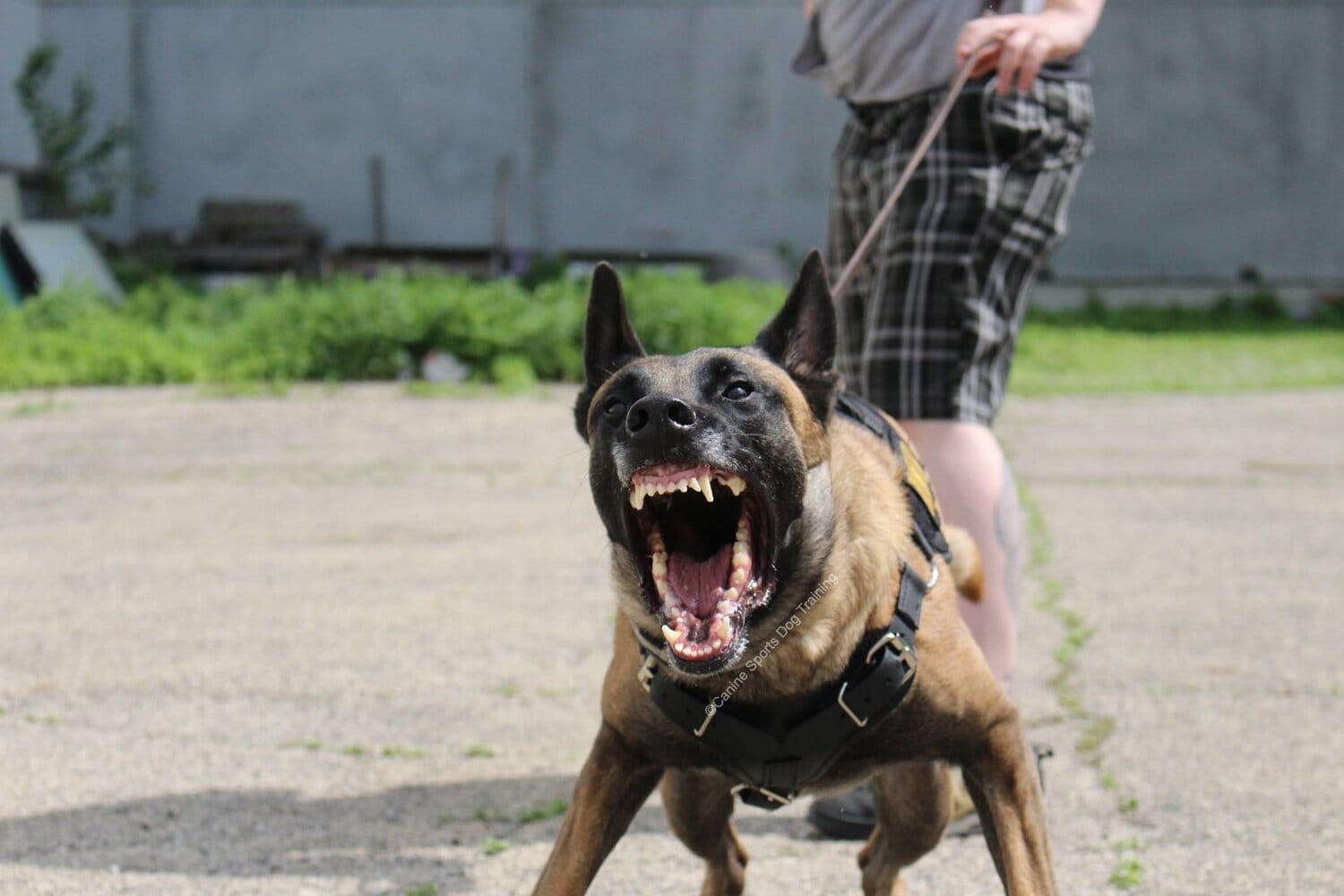
Encountering an aggressive dog while walking can be a frightening experience. After the encounter, it is necessary to take specific steps to ensure the safety of both the victim and the dog. This section outlines the steps that should be taken after an encounter with an aggressive dog.
Assessing Injuries
The first step after an encounter with an aggressive dog is to assess any injuries. If the victim has been bitten, it is important to clean the wound thoroughly and seek medical attention if necessary. It is also critical to document any harm, including taking photographs of the wounds and seeking medical records.
Reporting the Incident
After assessing injuries, the next step is to report the incident. Reporting the incident to the local animal control or law enforcement agency is important to ensure that the dog is properly identified and that steps are taken to prevent future incidents. The victim should provide as much information as possible, including the location, time, and description of the dog and its owner.
Consulting a Professional
Finally, it is important to consult a professional after an encounter with an aggressive dog. A professional can guide how to deal with the emotional trauma of the incident and can also provide advice on how to prevent future encounters with aggressive dogs. A professional can also guide how to properly document the incident and can provide advice on how to pursue legal action if necessary.
In conclusion, taking the appropriate steps after an encounter with an aggressive dog is important to ensure the safety of both the victim and the dog. By assessing injuries, reporting the incident, and consulting a professional, victims can take steps to prevent future incidents and ensure that they receive the help they need.
Preventive Measures

Socialization Techniques
One of the most effective ways to prevent aggression in dogs is to socialize them at an early age. Socialization involves exposing dogs to different people, animals, and environments to help them learn how to interact appropriately. This can be done by taking your dog to puppy classes, dog parks, and other social events.
Regular Training Sessions
Training your dog regularly can also help prevent aggression. This includes teaching basic commands such as "sit," "stay," and "come," as well as more advanced commands such as "leave it" and "drop it." Training sessions should be short and frequent to keep your dog engaged and interested.
Awareness of Surroundings
It is important to be aware of your surroundings when walking your dog. This includes keeping an eye out for potential triggers such as other dogs, loud noises, and unfamiliar people. If you notice your dog becoming anxious or aggressive, try to redirect their attention with a toy or treat.
Overall, preventing aggression in dogs while walking requires a combination of socialization, training, and awareness of surroundings. By following these preventive measures, you can help ensure a safe and enjoyable walking experience for both you and your furry friend.
Legal and Community Considerations
Understanding Local Dog Laws
Dealing with an aggressive dog while walking can be a daunting task, and it is important to understand the local dog laws. In some areas, there are specific leash laws that require dogs to be on a leash at all times when in public. Failure to comply with these laws can result in fines or other penalties.
Additionally, some areas may have breed-specific legislation that prohibits certain breeds of dogs from being in public spaces. It is important to research and understand these laws to ensure that you are in compliance and avoid any legal issues.
Community Resources and Support
Dealing with aggressive dogs can be a stressful and overwhelming experience, but there are community resources and support available. Local animal control agencies and humane societies can provide information and resources on how to safely handle aggressive dogs.
Furthermore, joining a local dog-walking group or attending obedience classes can provide valuable support and guidance from experienced dog owners. It is essential to seek out these resources and support systems to ensure the safety of the walker and the dog.
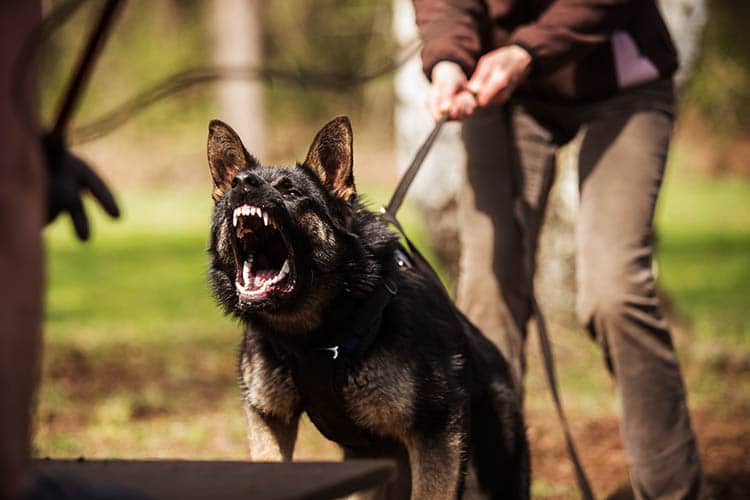
Conclusion
Encountering aggressive dogs while walking can be daunting, but with the right preparation and knowledge, you can handle these situations effectively. Remember to stay calm, use proper handling techniques, and carry protective tools to confirm your safety and that of your dog. By understanding dog aggression and implementing these techniques, you can enjoy your walks with peace of mind.
Frequently Asked Questions (FAQs)
- Q1: How can I protect myself from a dog attack while out for a walk?
- A1: There are several ways to protect yourself from a dog attack while out for a walk. One effective method is to carry a walking stick or an umbrella that can be used to fend off an aggressive dog. Additionally, it is necessary to be aware of your surroundings and avoid walking in areas with known aggressive dogs. If you see an aggressive dog approaching, try to remain calm and avoid making eye contact with the dog. Slowly back away while keeping the dog in your peripheral vision.
- Q2: What do you think are effective methods to deter an aggressive dog during a walk?
- A2: One effective method to deter an aggressive dog during a walk is to carry a spray deterrent such as citronella spray or pepper spray. These sprays can be used to deter an aggressive dog without causing any harm to the dog. Another effective method is to use a loud noise, such as a whistle or an air horn, to startle the dog and deter it from approaching.
- Q3: Why does my dog exhibit aggression only towards certain dogs during walks?
- A3: There are several reasons why a dog may exhibit aggression towards certain dogs during walks. One reason may be that the dog is feeling threatened or anxious due to the other dog's size, breed, or behavior. Another reason may be that the dog has had a negative experience with a dog of a similar size, breed, or behavior in the past.
- Q4: What steps should I take if an aggressive dog approaches me while I'm walking?
- A4: If an aggressive dog approaches you while you're walking, it is important to remain calm and avoid making eye contact with the dog. Slowly back away while keeping the dog in your peripheral vision. If the dog continues to approach, use a loud noise or a spray deterrent to deter the dog. If the dog attacks, try to protect yourself by using an object to fend off the dog or by curling up into a ball and protecting your face and neck.
- Q5: What should I do if my dog becomes aggressive towards other dogs on our walks?
- A5: If your dog becomes aggressive towards other dogs on your walks, it is vital to seek the help of a professional dog trainer or behaviorist. They can help you identify the root cause of your dog's aggression and develop a training plan to address the behavior. It is essential to avoid punishing your dog for their aggression, as this can exacerbate the behavior and cause further issues.




